The automotive market is ever-evolving, and when it comes to practicality and affordability, few vehicles stand out quite like the Citroën Berlingo and Dacia Jogger. Both models showcase a blend of functionality, comfort, and technology, appealing to families and businesses alike. This comparison delves into their technical specifications, innovations, and overall performance to see how they measure against each other.
Citroen Berlingo vs Dacia Jogger – Which one offers the better deal?
Compare performance, boot capacity, efficiency and price at a glance.
Find out which car is the better choice for you – Citroen Berlingo or Dacia Jogger?
Design and Dimensions
The Citroën Berlingo boasts a high roof wagon body style, providing ample headroom and a spacious interior. With a length that can reach up to 4753 mm, a width of 1848 mm, and a height of 1849 mm, the Berlingo is designed for versatility, offering a trunk capacity ranging from 775 to 1050 liters.
On the other hand, the Dacia Jogger features a more compact MPV design with a length of 4547 mm, a width of 1784 mm, and a height of 1674 mm. Its trunk capacity is more modest, ranging between 607 to 160 liters, but it can accommodate 5 or 7 seats, making it ideal for larger families.
Engine Options and Performance
The Citroën Berlingo offers a diverse range of engine types, including diesel, petrol, and electric options. The petrol engines provide power outputs ranging from 102 to 136 HP, while the electric variant can cover an impressive range of up to 345 km with a battery capacity of 46 kWh. The consumption ranges from 5.3 to 6.9 L/100km for fossil fuels, with an electric consumption of 18 kWh/100km.
Conversely, the Dacia Jogger also offers a variety of engines, including full hybrid, LPG, and petrol units. The power figures range from 91 to 140 HP, giving it a competitive edge in terms of power-to-weight ratio. Its fuel consumption is noteworthy, with figures between 4.7 and 7.7 L/100km, which may appeal to eco-conscious consumers.
Transmission and Drivetrain
Both vehicles focus on front-wheel drive systems, ensuring stability and efficiency. The Citroën Berlingo is equipped with manual and automatic transmission options, including a reduction gearbox for better traction and control. This feature can be particularly useful for businesses requiring heavy loads or families embarking on adventures that necessitate a robust vehicle.
The Dacia Jogger, while also offering manual and automatic gearboxes, leans towards a simpler setup with efficient power delivery, making it an attractive option for those seeking a no-fuss driving experience.
Innovative Features and Technology
When it comes to innovation, both models impress. The Citroën Berlingo integrates various high-tech features, including a touchscreen infotainment system with smartphone connectivity, multiple USB ports, and a host of driver-assistance systems designed to enhance safety.
In comparison, the Dacia Jogger doesn’t lag behind, presenting its own lineup of tech-savvy features such as a digital dashboard, smartphone integration, and effective safety measures. Its intuitive layout ensures that both drivers and passengers remain comfortable and connected.
Environmental Impact
The Citroën Berlingo shows a commitment to reducing its carbon footprint, achieving CO2 emissions as low as 138 g/km for petrol variants and offering an electric option that produces zero emissions. The Berlingo ranges into efficiency classes E and A depending on the engine choice, appealing to a variety of consumers.
The Dacia Jogger takes environmental responsibility seriously, with CO2 emissions ranging from 105 to 137 g/km for its petrol and LPG variants, situating itself within classes C and D. With its emphasis on fuel efficiency, the Jogger provides a compelling choice for buyers looking to minimize their ecological impact.
Final Thoughts
In conclusion, both the Citroën Berlingo and Dacia Jogger offer their unique advantages. The Berlingo stands out with its diverse engine range, spacious interior, and advanced tech features, making it a potential leader for those needing maximum versatility. Meanwhile, the Dacia Jogger shines through its fuel efficiency, affordability, and practicality, appealing more to budget-conscious families or individuals.
Your choice will ultimately depend on your specific needs—whether it's the spaciousness and flexibility of the Berlingo or the practicality and efficiency of the Jogger, both models promise to deliver on their core promise of comfort and utility.
Here’s where it gets real: The technical differences in detail
Costs and Efficiency:
Price and efficiency are key factors when choosing a car – and this is often where the real differences emerge.
Dacia Jogger has a noticeable advantage in terms of price – it starts at 15400 £, while the Citroen Berlingo costs 20200 £. That’s a price difference of around 4757 £.
Fuel consumption also shows a difference: Dacia Jogger manages with 4.70 L and is therefore a bit more efficient than the Citroen Berlingo with 5.50 L. The difference is about 0.80 L per 100 km.
Engine and Performance:
Power, torque and acceleration say a lot about how a car feels on the road. This is where you see which model delivers more driving dynamics.
When it comes to engine power, the Dacia Jogger has a slight edge – offering 140 HP compared to 136 HP. That’s roughly 4 HP more horsepower.
In acceleration from 0 to 100 km/h, the Dacia Jogger is somewhat quicker – completing the sprint in 9.80 s, while the Citroen Berlingo takes 11.20 s. That’s about 1.40 s faster.
In terms of top speed, the Citroen Berlingo performs minimal better – reaching 184 km/h, while the Dacia Jogger tops out at 174 km/h. The difference is around 10 km/h.
There’s also a difference in torque: Citroen Berlingo pulls evident stronger with 300 Nm compared to 200 Nm. That’s about 100 Nm difference.
Space and Everyday Use:
Cabin size, boot volume and payload all play a role in everyday practicality. Here, comfort and flexibility make the difference.
Seats: Dacia Jogger offers clearly perceptible more seating capacity – 7 vs 5.
In curb weight, Dacia Jogger is evident lighter – 1251 kg compared to 1530 kg. The difference is around 279 kg.
In terms of boot space, the Citroen Berlingo offers clearly more room – 1050 L compared to 607 L. That’s a difference of about 443 L.
When it comes to payload, Citroen Berlingo distinct takes the win – 840 kg compared to 582 kg. That’s a difference of about 258 kg.
Who comes out on top?
Overall, the Citroen Berlingo shows itself to be wins the duel decisively and secures the title of DriveDuel Champion.
It convinces with the more balanced overall package and proves to be the more versatile choice for everyday use.
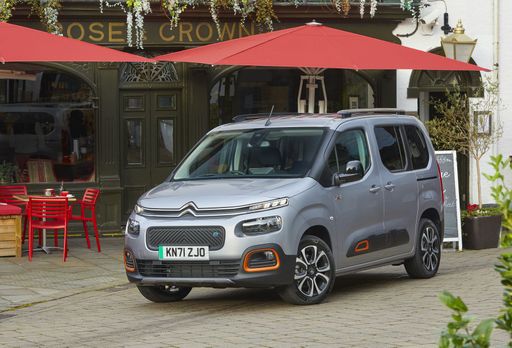 @ Citroën / Stellantis Media
@ Citroën / Stellantis Media
Citroen Berlingo
Citroen Berlingo
The Citroen Berlingo is widely celebrated for its spacious interior and practical design, making it an ideal choice for those seeking a versatile vehicle. Its high roof provides ample headroom, enhancing comfort for both driver and passengers, while the modular seating offers exceptional adaptability for transporting various loads. With its distinctive French styling and emphasis on functionality, the Berlingo stands out in the competitive market of multi-purpose vehicles.
details @ Citroën / Stellantis Media
@ Citroën / Stellantis Media
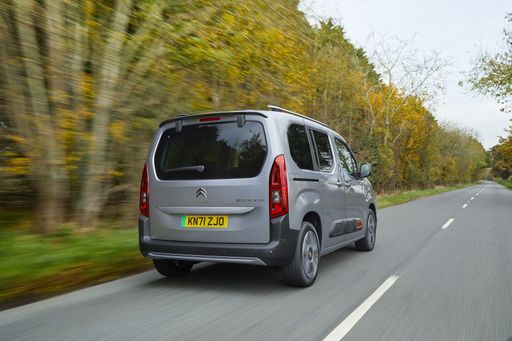 @ Citroën / Stellantis Media
@ Citroën / Stellantis Media
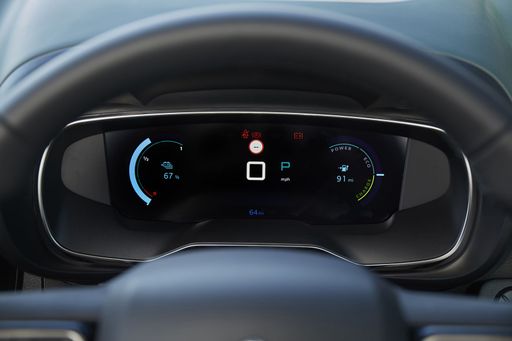 @ Citroën / Stellantis Media
@ Citroën / Stellantis Media
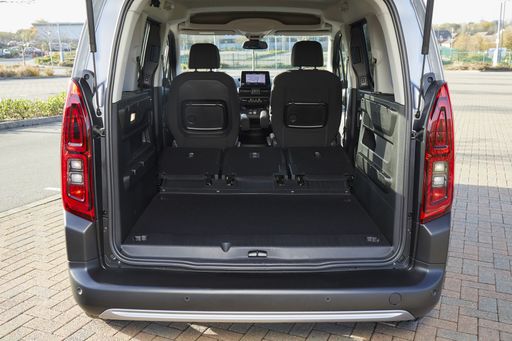 @ Citroën / Stellantis Media
@ Citroën / Stellantis Media
Dacia Jogger
The Dacia Jogger offers a spacious and versatile interior, making it an excellent choice for families seeking practicality and comfort. Its design combines the robustness of an SUV with the functionality of an estate, providing a reliable option for various driving needs. With a focus on affordability, the Jogger ensures that essential features are accessible without compromising on quality.
details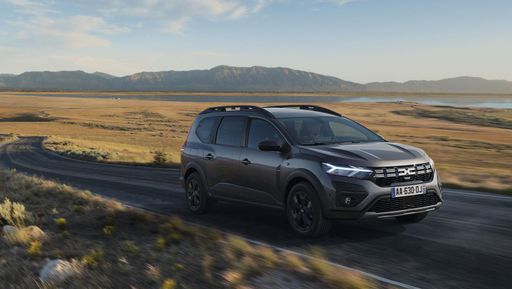 @ Dacia / Renault Group Media
@ Dacia / Renault Group Media
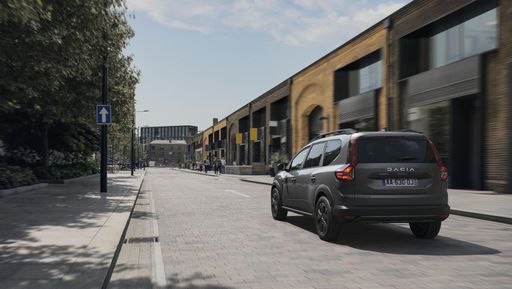 @ Dacia / Renault Group Media
@ Dacia / Renault Group Media
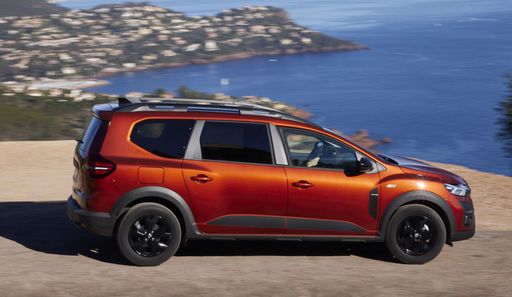 @ Dacia / Renault Group Media
@ Dacia / Renault Group Media
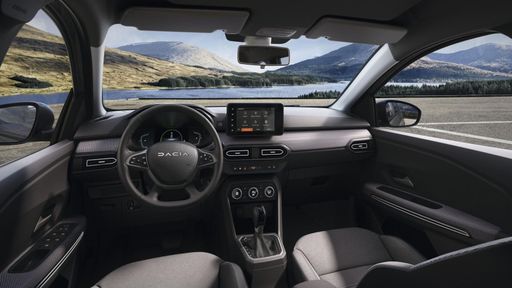 @ Dacia / Renault Group Media
@ Dacia / Renault Group Media
 @ Citroën / Stellantis Media
@ Citroën / Stellantis Media
|
 @ Dacia / Renault Group Media
@ Dacia / Renault Group Media
|
|
|
|
Costs and Consumption |
|
|---|---|
|
Price
20200 - 34700 £
|
Price
15400 - 23400 £
|
|
Consumption L/100km
5.5 - 5.8 L
|
Consumption L/100km
4.7 - 7.8 L
|
|
Consumption kWh/100km
18 - 18.7 kWh
|
Consumption kWh/100km
-
|
|
Electric Range
334 - 343 km
|
Electric Range
-
|
|
Battery Capacity
46 kWh
|
Battery Capacity
0.60 kWh
|
|
co2
0 - 151 g/km
|
co2
105 - 137 g/km
|
|
Fuel tank capacity
50 L
|
Fuel tank capacity
40 - 50 L
|
Dimensions and Body |
|
|---|---|
|
Body Type
High Roof Estate
|
Body Type
MPV
|
|
Seats
5
|
Seats
5 - 7
|
|
Doors
4 - 5
|
Doors
5
|
|
Curb weight
1530 - 1881 kg
|
Curb weight
1251 - 1460 kg
|
|
Trunk capacity
775 - 1050 L
|
Trunk capacity
160 - 607 L
|
|
Length
4403 - 4753 mm
|
Length
4547 mm
|
|
Width
1848 mm
|
Width
1784 mm
|
|
Height
1844 - 1849 mm
|
Height
1674 mm
|
|
Max trunk capacity
-
|
Max trunk capacity
1807 - 1819 L
|
|
Payload
509 - 840 kg
|
Payload
393 - 582 kg
|
Engine and Performance |
|
|---|---|
|
Engine Type
Diesel, Electric
|
Engine Type
Full Hybrid, LPG, Petrol
|
|
Transmission
Manuel, Automatic
|
Transmission
Automatic, Manuel
|
|
Transmission Detail
Manual Gearbox, Automatic Gearbox, Reduction Gearbox
|
Transmission Detail
Automatic Gearbox, Manual Gearbox
|
|
Drive Type
Front-Wheel Drive
|
Drive Type
Front-Wheel Drive
|
|
Power HP
102 - 136 HP
|
Power HP
91 - 140 HP
|
|
Acceleration 0-100km/h
11.2 - 13.2 s
|
Acceleration 0-100km/h
9.8 - 13.2 s
|
|
Max Speed
132 - 184 km/h
|
Max Speed
167 - 174 km/h
|
|
Torque
250 - 300 Nm
|
Torque
160 - 200 Nm
|
|
Number of Cylinders
4
|
Number of Cylinders
3 - 4
|
|
Power kW
75 - 100 kW
|
Power kW
67 - 103 kW
|
|
Engine capacity
1499 cm3
|
Engine capacity
999 - 1598 cm3
|
General |
|
|---|---|
|
Model Year
2024 - 2025
|
Model Year
2024 - 2025
|
|
CO2 Efficiency Class
E, A
|
CO2 Efficiency Class
C, D
|
|
Brand
Citroen
|
Brand
Dacia
|
What drivetrain options does the Citroen Berlingo have?
The Citroen Berlingo is offered with Front-Wheel Drive.
The prices and data displayed are estimates based on German list prices and may vary by country. This information is not legally binding.
